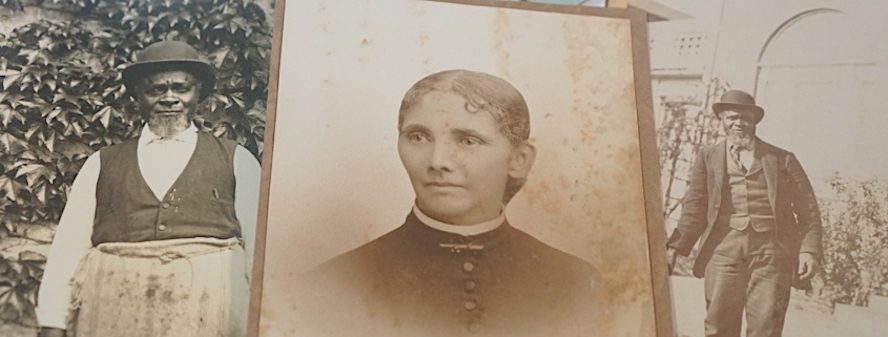Tudor Place’s ‘Ancestral Spaces’ Pays Homage to Its Black History

Tudor Place opened an exhibition entitled, “Ancestral Spaces: People of African Descent at Tudor Place,” on Feb. 6, timed for Black History Month. It is proving so popular that it will likely continue beyond its planned April closing.
The Georgetown nonprofit claims that “America’s story lives here.” It recently has added: “As a historic site that bears the scars of slavery, Tudor Place seeks to look this injustice in the eye.”
Created in collaboration with descendants of the enslaved and free African American individuals who worked at Tudor Place, “Ancestral Spaces” aims to honor their ancestors’ stories—stories which have been historically neglected in favor of centering the property’s white owners—through a guided walking tour and series of newly installed interactive displays.
Tudor Place at 1644 31st St. NW was owned by the Peter family from 1805 through 1983. The Peters — a family which included Martha Peter, the granddaughter of Martha Washington and step-granddaughter of George Washington — owned slaves until the District of Columbia Emancipation Act of Apr. 16, 1862, and continued profiting as a result of the enslavement of Black people long after. As a result, in recent years the property’s current faculty members have been diligently brainstorming ways to meaningfully acknowledge the systemic oppression embedded with the site’s history.
For Rob DeHart, the Curator of Tudor Place, the first step towards accountability was abundantly clear: it was imperative to consult the descendants of the known enslaved and liberated Black laborers (such as Hannah Pope, John Luckett, Sall Twine, Barbara Cole Williams, and Patty Allen) who had worked at the house.
“I reached out to the descendants of John Luckett about a year and a half ago. We found them on Ancestry.com, and luckily, they were very interested in being involved with the site,” DeHart said.
Luckett was a self-emancipated gardener who tended to the grounds of Tudor Place as a free man for 44 years from 1863 to 1907. Two of his descendants, Karl Haynes and Jerolyn Cole, played an integral role in creating “Ancestral Spaces.”
“Once we connected, it was a matter of building trust, because historic sites like this have traditionally focused on the white history and not the Black history,” DeHart added.
This trust was built through collaboration, namely, by empowering descendants with significant decision-making power, according to DeHart, while designing the exhibition and demonstrating a clear commitment to truthfully and transparently recounting Tudor Place’s past.
“Our job was to facilitate how we could bring their visions to life in our space with our budget and with the interpretive tools we have available at our disposal,” DeHart said.
The Drawing Room is just one of many sites on the property which has been newly transformed into an important site of remembrance.
The paintings of slave owners which used to cover the parlor’s dandelion yellow walls have been replaced with modern family photographs of the Tudor Place Descendant Community, including a selfie of Haynes and his loved ones
Furthermore, newfound attention is being paid to the commendable artistic contributions of Samuel Collins, the man responsible for designing the intricate cornices lining the ceiling. Though Collins managed to emancipate himself within his lifetime, his wife Sarah and their three children remained enslaved.
“The descendant community was really at the heart of developing this installation,” Collections Manager Ianna Recco said. “As a result, ‘Ancestral Spaces’ will have a lasting impact on Tudor Place.”
Though Ancestral Spaces was originally intended to close on April 21, the positive reception from the Washington community has prompted faculty to reconsider.
“We’re talking about extending the exhibition. We’ll know soon about how long, but it is definitely going to be past April, because it has been so successful and moving for a lot of people. It’s really made us rethink the space and how we can better incorporate these stories more long term,” DeHart said.
In addition to moving Tudor Place’s regular crowd of local visitors, the exhibition has been particularly powerful for descendants of the enslaved and free Black individuals who worked here during their lifetimes.
“I’ve also seen the impact on the other descendants aside from the ones that we’ve worked with,” DeHart concluded. “They’ve been coming to the site, ones I’ve never met before, and they’re sharing photos with us, sharing stories. I’ve been getting emails about how we’ve made it a welcoming place, and I think that that is the best compliment we can receive, because it wasn’t a welcoming place to a lot of African Americans for so many years. After seeing the substantial community impact, we definitely don’t want to go backwards. We want to keep moving forwards.”

